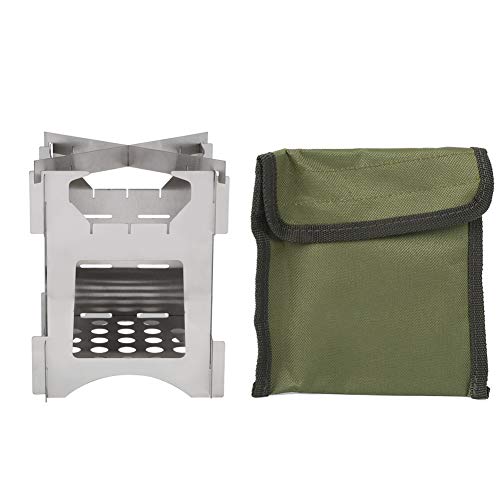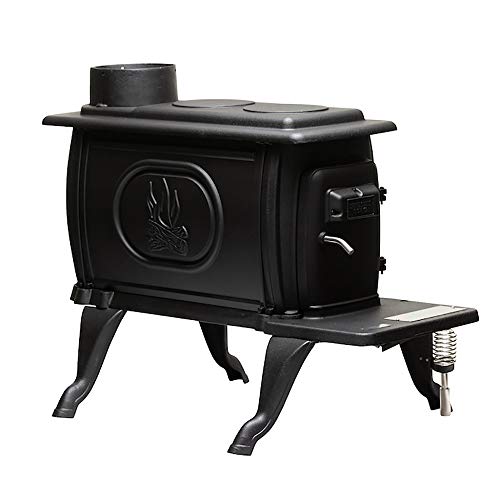20 Trailblazers Setting The Standard In Wood Burning Stoves
페이지 정보

본문
 wood burning stoves near me, try this,
wood burning stoves near me, try this,Wood stoves are a beautiful, efficient way to heat your house. When purchasing a stove there are a few things to take into consideration. They include EPA-certified energy efficiency, price and maintenance requirements.
 Be careful not to become "number bound" and make your decision based solely on a particular rating or BTU output. You should also take into consideration aesthetics, recommendations from a reputable dealer and customer feedback.
Be careful not to become "number bound" and make your decision based solely on a particular rating or BTU output. You should also take into consideration aesthetics, recommendations from a reputable dealer and customer feedback.Cost
Wood stoves can provide an elegant, stylish flair to any house. They are available in a variety of colors and styles that will match any decor. They are a great alternative to costly heating systems. They are also energy-efficient and cost-effective. However there are some aspects to consider when buying a new wood stove. Included in this are the initial cost as well as the installation costs and any other extras, like chimney liners.
The cost of a wood stove depends on the kind and size you select. There are freestanding stove for less than PS700. The stove features a huge viewing window which is maintained clean by an airwashing system that is powerful. It is multi-fuel, which means it can burn a variety of fuels.
Noncatalytic wood stoves are much less expensive than catalytic models, however they aren't easy to ignite and require more fuel to generate the same amount of heat. They also release more particulate matter into air than catalytic stoves. Despite these limitations the noncatalytic stove is a reasonable option for a lot of people.
Pellet stoves are another popular alternative to traditional small contemporary wood burning stove burning stoves. They're similar to wood stoves, however, they are made of smaller pellets made of recycled materials or wood. They are easier to maintain than wood stoves, however they don't offer the same amount of heat.
Whether you're choosing a wood or pellet stove you'll need to take into account the cost of installing a venting system. Some wood stoves require an outside combustion-air intake as well as venting systems that connect to a chimney. Based on the location you live in and the building codes in your area, you may need to have your stove approved by the local building inspector.
If you're installing a wood burning stoves small stove inside an existing fireplace, you'll likely to spend less money on installation. You'll need to install a chimney liner and you might need to employ someone to clean the chimney periodically. Additionally, a freestanding wood stove can't be able to reach all rooms of an apartment with multiple floors, so you'll need to put in radiators in other rooms to add the heat.
Energy Efficiency
Many homeowners are searching for alternatives to traditional heating systems as the price of electricity and natural gas continues to increase. Wood stoves are one of the most sought-after alternatives to traditional heating systems because they provide a low-cost and sustainable source of heating. They also burn cleaner, which reduces the amount of air pollution.
Modern wood burning stoves are incredibly efficient in energy use, which means they generate more heat for your home, using less fuel. This is due in part to the fact that modern wood burning stoves have smaller combustion chambers as compared to older models. They also utilize a catalytic combustor that helps to burn fuel more efficiently. They also emit less harmful pollutants which is important if you are living in an zone where stricter air quality standards are required.
Log burners are also more eco-friendly because they allow you to control the amount of air provided to your fire. This lets it burn at a lower temperature for a longer time. This can reduce the amount of smoke generated by the fire and reduce the accumulation of flammable creosote within your chimney.
Burning a variety of different kinds of wood, such as scrap and reclaimed wood, will create a better fuel mixture that will reduce the amount of waste gases generated by the burning. You can also burn unneeded wood that was discarded in building projects. This way you can cut down on the cost of purchasing firewood and help to conserve our forests.
Wood is a carbon neutral fuel due to its renewable resource. The trees absorb carbon dioxide as they grow and release it after burning, thereby creating an endless cycle of life. In addition, by sourcing local wood, you will support the local economy while reducing your environmental footprint.
Another benefit of a wood-burning stove is that it provides an additional source of warmth in the event an outage in power. If you can store enough logs, you will be able to keep your home warm for a number of days. You can cook on your stove and heat water.
Environmental Impact
The use of a wood stove could result in negative effects on the environment and your health, depending on how it's executed and the type of wood you are using. Wood burning releases harmful gases such as carbon monoxide and nitrogen oxides, as well as fine particles called PM (particulate material). PM (particulate matter) is a mixture of harmful substances such as black carbon, soot, and tar. These pollutants have been linked to a range of health issues such as heart disease and respiratory problems.
The emissions of wood burning stoves can be harmful to the environment as well as health. In addition, burning wood can cause the release of volatile organic compounds (VOCs) that are the main source of VOCs in indoor air. VOCs, which are a form of pollutant are linked to a variety of health problems such as headaches and irritation of the eyes.
VOCs can damage the respiratory system, lungs and circulatory systems. They also contribute to a variety of environmental problems that include the loss of biodiversity as well as water quality issues and soil erosion. In some areas the levels of VOCs in wood smoke could exceed federally-enforceable standards.
According to a report published by Undark Five states have offered incentives to replace old wood-burning stoves with EPA certified models. However, a majority of these appliances offer only marginal improvements over the older models. Moreover, they are expensive and require electricity to operate fans, controls and pellet feeders.
Consequently, some environmental agencies have begun to abandon incentives to encourage the purchase of new wood stoves in favour of encouraging people to switch over to alternative sources of heating. The State of Oregon for example requires homeowners to take down wood burning stove near me-burning appliances that are not certified and also encourages them to switch to heat pump.
Wood stoves are more energy efficient than other heating methods such as gas or electric furnaces. These stoves produce more heat with less wood than their electric or gas counterparts, making them a sustainable and affordable choice for heating homes. They must be maintained and checked regularly to cut down on fuel usage and improve efficiency. By getting rid of the feed system and hoppers at the end of the season, you can reduce the risk of rust and make sure that the stove is ready to start in the autumn. Regularly cleaning the stove's chimney vent will also help to prevent the buildup of flammable material.
Safety
Wood burning stoves are a great alternative to heat, but they can also be dangerous for your family's safety. Fires can cause smoke inhalation, carbon monoxide poisoning, and other serious problems. However, you can protect your family and home by taking the proper safety precautions.
Make sure your stove is correctly installed and venting. A qualified professional should install the chimney, flue pipe and connectors. The chimney should be at least three feet higher than any object that could ignite. This includes overhanging trees or buildings adjacent to them. Install carbon monoxide and smoke (CO) detectors outside every bedroom and on each floor of the house and connect them so they all sound when one alarm goes off. Check your alarms regularly and replace batteries. Keep combustibles, like garbage, paper plastics, plastics and so on, away from your stove and don't burn them there or near it.
Never leave a stove that is burning wood unattended, particularly at night. If you have a wood-burning stove located in the bedroom, turn off the heat and open the windows prior to going to go to bed. This will stop the smoke from entering your bedroom and cause CO poisoning.
If you plan to make use of a wood-burning stove you should consider installing an air-cleaning system. These systems help to capture and neutralize volatile organic compounds from the exhaust stream prior to it leaving the fireplace. Keep your stove clean and the draft louvers, the grate and draft hoods free of ash.
Wood smoke is hazardous to everyone, but it is particularly harmful to children and adults with weakened lungs. It can also trigger asthma and respiratory infections. Avoid using wood stoves on days when pollution levels are high. The EPA and each state will provide daily reports on air quality.
Wood stoves that are new may be more efficient than older models, however they still emit large amounts of pollutants into the air. Choose a model that has been certified by the EPA as being over 72 percent efficient, to reduce your exposure. Burn only seasoned, dry wood. This kind of wood produces more heat and fewer toxic substances than fresh, green wood.
- 이전글Stove Wood Burning: 11 Things You're Forgetting To Do 24.10.25
- 다음글Your Worst Nightmare About Replacement Audi Key Relived 24.10.25
댓글목록
등록된 댓글이 없습니다.
